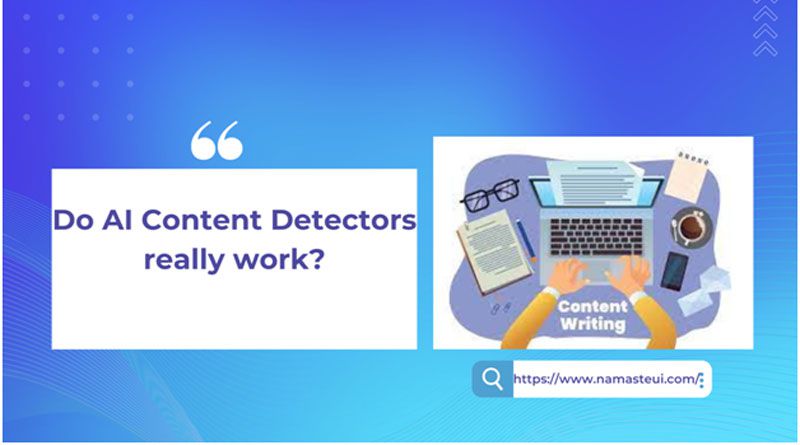AI content detectors have shown significant progress and effectiveness, but it’s also important to recognize that they are not perfect and there are limitations.
AI content detection typically relies on machine learning and more specifically deep learning techniques. These systems are trained on large amounts of data and learn to recognize patterns that correspond to specific content.
To understand this in-depth, let’s delve into this article.
What is an AI content detector?
One of the key areas where AI has made a significant impact is in the use of AI content detector. These sophisticated tools use advanced algorithms to analyze content and perform various tasks to aid the writing process. Artificial Intelligence (AI) content detectors serve as sophisticated tools that leverage machine learning algorithms to scrutinize text.
Their primary function is to differentiate between human-written text and content produced by AI language models. As AI language models become more prevalent in the realm of content generation, the significance of these content detectors has escalated.
The Challenges in Content Writing
In today’s digital age, content writing faces numerous challenges. One of the major obstacles is the need to produce large volumes of original and engaging content. With an increasing amount of online content, writers face stiff competition in capturing readers’ attention. This creates a necessity for novel and exciting ideas that are not just unique but also captivating.
Another challenge is ensuring the authenticity of the content. The rise of AI language models, such as GPT-3 by OpenAI or Lambda by Google, can create content that is often difficult to distinguish from the human-written text. Ensuring the content’s authenticity, i.e., verifying that it was written by a human author and not an AI, becomes essential.
Additionally, keeping the content optimized for search engine visibility while maintaining its originality and relevance can also pose a difficult task. Staying updated with constantly changing SEO algorithms is a constant challenge.
The Role of AI in Verifying Content Authenticity
Artificial intelligence (AI) has a crucial role in verifying the authenticity of content. Specifically, AI content detectors can discern between human-written and AI-generated content. AI’s capability to process and analyze vast amounts of data with speed and accuracy allows it to detect patterns that distinguish human writing from AI-produced content.
AI content detectors have various techniques, like pattern detection and linguistic analysis, to determine if a piece of content is human-generated or created by AI models. These tools are trained on extensive data sets and are designed to identify subtle nuances and patterns that are typical of AI-generated content.
The Technology Behind Language Models and AI Content Detectors
AI language models, such as GPT-3 or Lambda, use advanced machine learning algorithms based on a variant of transformers, specifically the Transformer Decoder architecture. The transformer model, introduced in the paper “Attention is All You Need,” uses an attention mechanism that weighs the influence of different words when generating a response. This allows it to predict the next word in a sentence based on the words it has already seen, both immediately preceding and within a larger context.
GPT-3, for instance, uses unsupervised learning and is trained on a diverse range of internet text. It analyzes the patterns in this data and learns how to predict the next word in a sentence. However, it should be noted that it doesn’t understand text in the way humans do. It identifies statistical patterns in the data it was trained on and uses this to generate predictions.
AI content detector employs sophisticated techniques to identify these patterns indicative of AI-generated content. Some strategies might include:
1. Perplexity
Perplexity is a measurement used in natural language processing to determine how well a probability model predicts a sample. In the context of language models like GPT-3 or Lambda, a lower perplexity score indicates that the model is better at predicting the sample. These models are trained to minimize the perplexity of the next word prediction in a sentence.
However, this striving for minimum perplexity can be a telltale sign of AI-generated content. AI models tend to generate text that has an unnaturally low perplexity. They often use more predictable phrasing and vocabulary, resulting in text that may be too consistent or lacking in creativity compared to human writing. AI content detectors can use this characteristic to identify AI-generated content.
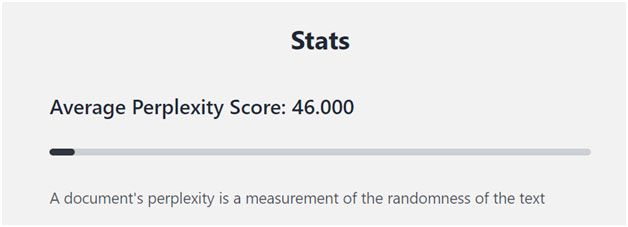
2. Burstiness
Burstiness refers to the property of language where certain words or phrases are likely to appear in clusters or “bursts” within a document. This is a common feature in human-generated text, driven by the topic of discussion or the author’s personal vocabulary preferences.
AI models, on the other hand, are trained on massive amounts of text data and tend to generate content that has less burstiness. They aim to produce diverse and well-structured sentences, and this drive for diversity and fluency can lead to the underuse of topic-specific words or phrases, resulting in less burstiness compared to human writing. By detecting the level of burstiness in a text, AI content detectors can help differentiate between human and AI-generated content.
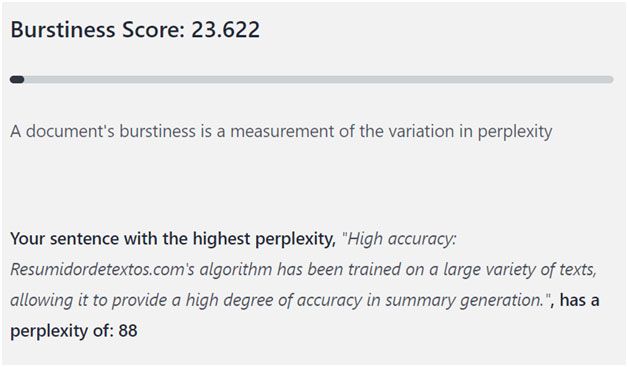
3. Pattern recognition:
AI language models often follow certain patterns when generating text, such as a preference for certain phrases or structures that humans don’t use as frequently. Detecting these repeated patterns can help distinguish AI-generated content from human-written text.
In the context of AI-generated content, tools like GPTZero utilize advanced technologies like Perplexity and Burstiness to assess whether a piece of content has been created by an AI or by a human.
However, it’s important to note that these content detection tools are not foolproof and their predictions can vary depending on the specific models and algorithms used.
Additionally, as AI models continue to improve, so do the techniques for detecting AI-generated content. Therefore, it is an ongoing challenge to develop reliable methods to accurately differentiate between AI and human-written content.
Do AI Content Detectors really work? Debunking Myths and Revealing Results
AI content detectors work by utilizing machine learning techniques, where they are trained on large datasets containing examples of both desired and undesired content. The algorithms learn to recognize patterns and features that distinguish between different types of content. Once trained, these models can be deployed to automatically analyze and categorize new content.
While AI content detectors can be effective, they could be better. They have certain limitations and can occasionally produce false positives or false negatives. False positives occur when the system mistakenly identifies content as inappropriate or problematic when it is harmless. False negatives, on the other hand, happen when the system fails to identify genuinely problematic content.
Improvements and refinements are constantly being made to AI content detectors through ongoing research and development. By continually training and fine-tuning these models, developers strive to enhance their accuracy and reduce the occurrence of false identifications.
Here is an example: we used different content detectors to check the accuracy of AI-written content. Here are the results:
Tool Name: GPT Zero
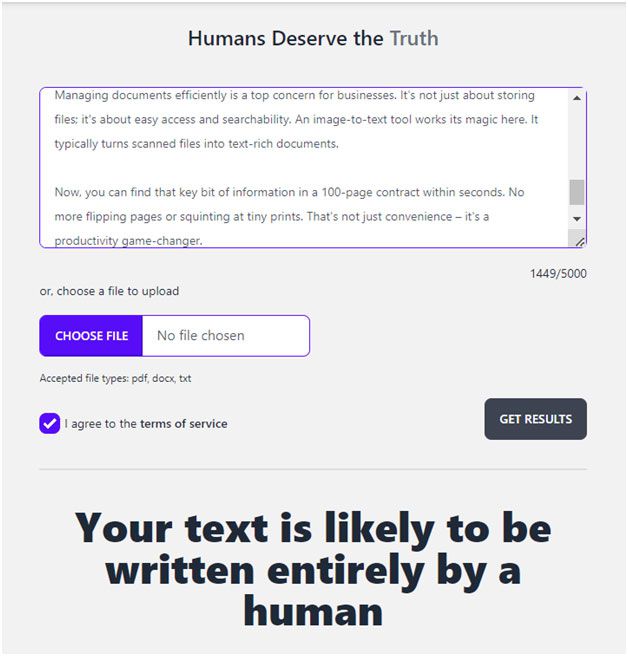
Tool Name: Paraphrasingtool.ai
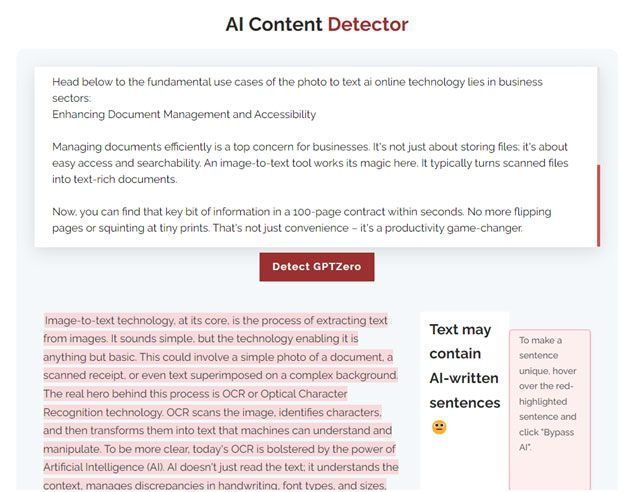
Tool Name: Writer.com
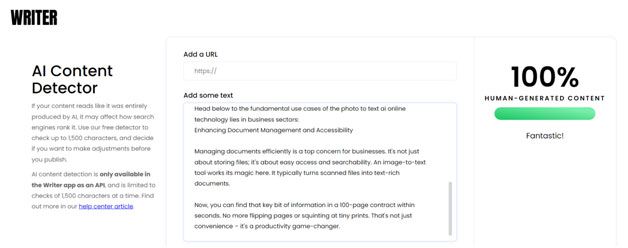
Although the text was generated by AI, two highly known AI Content Detectors (gptzero.me and writer.com) identified it as human-written. However, Paraphrasingtool.ai correctly recognized the text as AI-generated, indicating its superior accuracy compared to other tools.
We rephrased the content using an online tool and used an AI Content detector again. Here are the results:
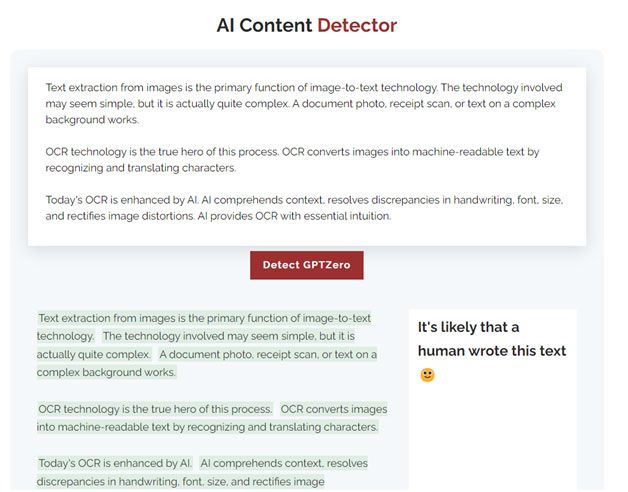
Paraphrasingtool.ai is now categorizing the rephrased content as being written by a human, even though it is generated by an AI.
The Advantages of Using AI Content Detectors
AI content detectors provide numerous benefits, particularly in maintaining the integrity of human-written content. They swiftly scan large volumes of content and accurately identify AI-generated text, ensuring the authenticity of the content.
By identifying AI-generated content, these tools help maintain the human touch that is often crucial for effective communication. They ensure that the content we consume is genuinely human, embodying the creativity, spontaneity, and empathy that currently distinguish human writers from AI.
Moreover, using AI content detectors allows writers and content managers to verify the originality of their work against the growing reservoir of AI-generated content. This can help content creators ensure that their work maintains its unique human perspective, even as AI models become increasingly sophisticated in mimicking human writing style.
Furthermore, by automating the verification process, AI content detectors free up time for writers and content managers. This allows them to focus on the more creative and strategic aspects of content creation, such as idea generation, storytelling, and content strategy.
Conclusion
In conclusion, as AI language models continue to evolve and create more human-like content, the role of AI content detectors in maintaining content authenticity becomes increasingly important. They not only ensure the integrity and originality of human-written content but also support content creators in navigating the challenges of the rapidly evolving digital content landscape.

Namaste UI collaborates closely with clients to develop tailored guest posting strategies that align with their unique goals and target audiences. Their commitment to delivering high-quality, niche-specific content ensures that each guest post not only meets but exceeds the expectations of both clients and the hosting platforms. Connect with us on social media for the latest updates on guest posting trends, outreach strategies, and digital marketing tips. For any types of guest posting services, contact us on info[at]namasteui.com.

